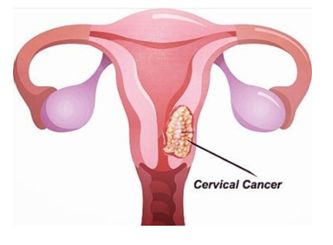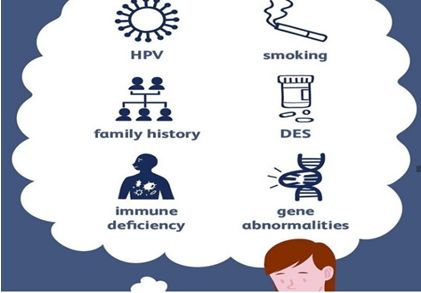Cervix Cancer
Mar 12, 2019 • 5 views
CERVIX CANCER
We are presently in the high-tech generation, the 21stcentury. It’s better to term it as an era of modernity and development. We are growing in all ways. We now also acknowledge a better life expectancy ratio. There’s been rapid growth in science and medicine for this purpose but still there are a lot of uncertain diseases around us. One such is cervical cancer. Cervical cancer is a disease affecting women.
The uterinecervixis the lowest portion of a woman's uterus (womb), connecting the uterus

with thevagina.
Cervical canceroccurs when the cells of the cervix grow abnormally and invade other tissues and organs of the body. When it is invasive, thiscancer affects the deeper tissues of the cervix and may have spread to other parts of the body (metastasis), most notablythelungs,liver,bladder,vagina, and rectum.
Cervical cancer is termed as a mediumrare disease. It has fewer than one millioncases in India.
Symptoms of Cervical Cancer
As in many cancers, you may have no signs orsymptoms of cervical canceruntil it has progressed to a dangerous stage. They may include:
Pain, when the cancer is advanced
Abnormal vaginal bleeding(other than duringmenstruation)
Abnormalvaginal discharge
Pelvic pain
Kidney failuredue to a urinary tract orbowel obstruction, when the cancer is advanced.
Causes of Cervical Cancer
Cervicalcancerbegins with abnormal changes in the cervical tissue. The risk of developing these abnormal changes is associated with infection with human papillomavirus (HPV). In

addition, early sexual contact, multiple sexual partners, and takingoralcontraceptives(birth controlpills) increase the risk of cervical cancer because they lead to greater exposure to HPV.Cigarettesmokingis another risk factor for the development of cervical cancer. The chemicals in cigarette smoke interact with the cells of the cervix, causing precancerous changes that may over time progress to cancer.Oralcontraceptives("the pill"), especially if taken longer than five years, may increase the risk for cervical cancer. Most women diagnosed with precancerous changes in the cervix are in their 20s and 30s, but the average age of women when they are diagnosed with cervical cancer is the mid 50s.There have been preventive measures evolved and better treatment techniques made available.
Medications available for treatment

With advancement in science and technology the methods for prevention or treatment of this disease have also been developed progressively. There are treatment measures like chemotherapy. Also called “chemo,” it’s a way to treatcancerthat usesdrugsto kill cancer cells. It targets cells that grow and divide quickly, ascancercells do. Unlike radiation or surgery, which target specific areas, chemo can work throughout your body. Other method is Targeted therapy. It uses drugs that kill cancer cells but spare healthy cells. For example,bevacizumab(Avastin) is a drug that stops new blood vessels from forming. This can slow down tumour growth in advanced cervical cancer. There are also surgeries available for treatment. Surgery is the main treatment for cervical cancers.The type of surgery you have depends on how large the cancer has grown and whether it has spread. Other one is radiation. This is a recently developed technique. Radiation uses high-energy X-rays to kill cancer cells and stop their growth. You might get radiation before or after surgery, or if your cancer has spread beyond your cervix.No woman should die of cervical cancer in this day and age, yet each year more than 260,000 women do, mostly in low- and middle-income countries (LMICs).1The dramatic disparity in incidence rates between high- and low-income countries is due primarily to differential access to effective screening and precancer, or preventive, treatment; similar disparities also exist within countries.Every year that we delay, we squander the scientific advances we have made, lose ground on building the evidence for effective strategies, and tragically, lose women who could have been saved.
